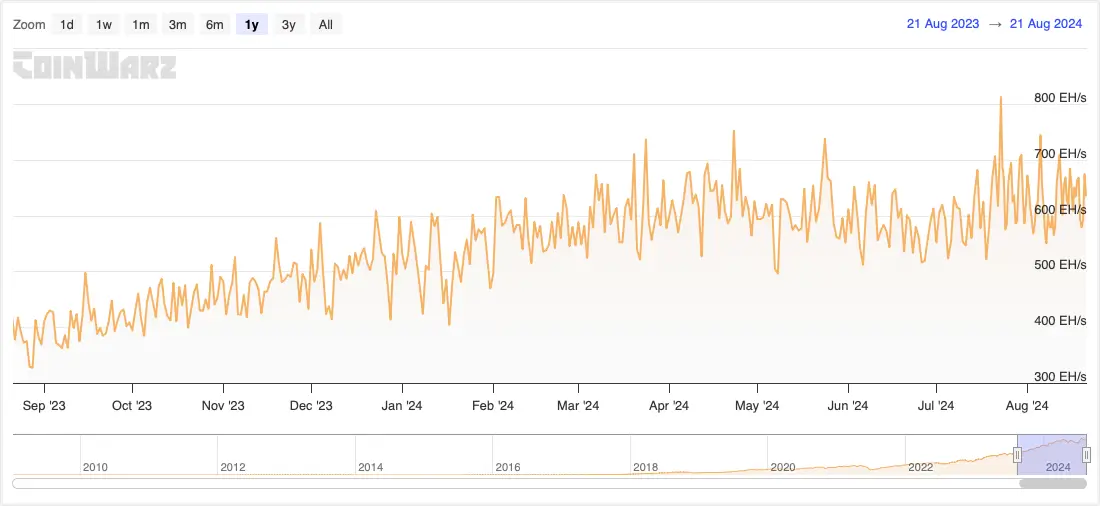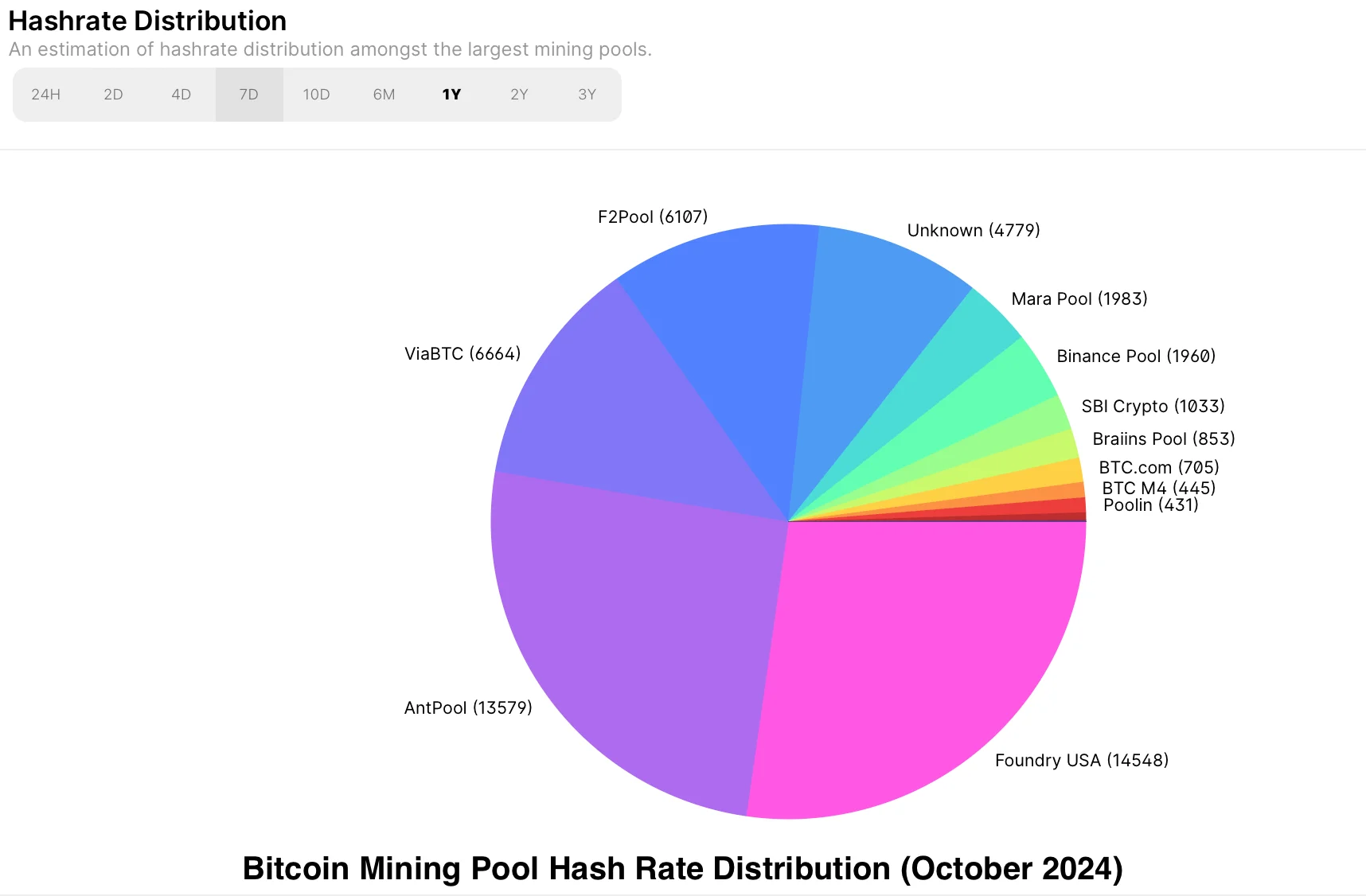If you feel like investing in Bitcoin isn’t working out for you anymore, you’ve probably wondered if mining Bitcoin is better than hunting for free crypto airdrops.
Thus, you’re curious about how long it takes to mine 1 Bitcoin and the details surrounding Bitcoin mining.
In today’s article, we’ll answer some of the most asked questions you might have about Bitcoin mining, starting with the most frequently asked, such as how long it takes to mine 1 BTC as well as mining difficulty, Bitcoin mining profitability, and others.
Nonetheless, we’ll show you how theory and reality compare (or don’t). So, let’s jump in!
Table of contents
- Key Takeaways
- How Long Does It Take to Mine 1 Bitcoin, On Average?
- Mining Bitcoin at a Glance
- Steps to Mine Bitcoin
- How Many Bitcoins Are Left to Mine?
- Bitcoin Mining Profitability: Is Bitcoin Mining Profitable in 2024?
- What Determines How Long It Takes to Mine One Bitcoin?
- Bitcoin Mining FAQs
- In Conclusion
Key Takeaways
- Theoretically, it takes 10 minutes to mine 1 Bitcoin and earn 3.125 BTC;
- Mining with just one PC could take around 2 million years at 500 MH/s, and using an iPhone 16 Pro Max would take about 10 trillion years.
- When a Bitcoin miner successfully validates a new block on the blockchain, they earn a block reward of 3.125 BTC.
- As of October 2024, about 1,163,643 Bitcoins remain to be mined, with the last Bitcoin expected to be mined around 2140.
How Long Does It Take to Mine 1 Bitcoin, On Average?
In theory, the fastest you can mine 1 Bitcoin is about 10 minutes because that’s how long it takes for a new block to be added to the Bitcoin blockchain. When miners add a Bitcoin block, they receive a reward of 3.125 BTC.
However, in practice, the reality is quite different, and how long it takes to mine 1 BTC depends on factors like your Bitcoin mining hardware, software, and how much computing power there is.
Most miners join large Bitcoin mining pools and share the rewards, making it nearly impossible to mine 1 Bitcoin as a solo miner in 10 minutes, even with the best equipment.
If you plan to mine Bitcoin using just a PC, the short answer is that it could take roughly 2 million years to mine 1 Bitcoin with only a PC, assuming you can achieve 500 MH/s in a Bitcoin mining pool without any changes in network conditions.
Of course, the mining speed depends on the type of Bitcoin mining hardware you use, but for example, if you have a high-end gaming computer and can manage 500 MH/s, you might earn about BTC 0.000000297/year in perfect conditions.
Thus, Bitcoin miners generally have hundreds of mining hardware gears to increase their hash rate, meaning that the more hashing power they have, the quicker and quicker they achieve a fast turnaround.
Now, if you’re considering being a Bitcoin miner using a smartphone to mine Bitcoins, calculating the hash rate is tricky since smartphones aren’t designed for mobile crypto mining.
However, the iPhone 16 Pro Max may reach around 100 H/s, and by using a Bitcoin mining calculator, this could yield an estimated mining reward of 0.0000000000001 BTC/year.
Yet, if you still want to text out cryptocurrency mining on mobile, you could check out free crypto mining apps and see what the market offers.
The honest answer for individual miners is still, “It ain’t gonna happen.” Thus, many miners join mining pools to increase their chances and speed until they fine-tune the target hash rate. In this case, miners earn rewards proportional to their hash rate since miners combine all their computational power.
Mining Bitcoin at a Glance
Unlike earlier years, nowadays, the Bitcoin mining process can be best explored in terms of mining cryptocurrency blocks, as opposed to single units, such as one Bitcoin block. The reason is simple: a newly minted Bitcoin is only mined whenever a new block on the Bitcoin blockchain is validated.
Block mining requires solving a complex encrypted function, also known as a hash. The first miner to validate a new block gets a reward, also known as a block reward, which is currently 3.125 BTC since April 2024, when Bitcoin halving occurred, down from 6.25 BTC.
Remember that Bitcoin mining is a competitive process that requires significant computing power to solve complex cryptographic puzzles, which often translates to increased energy consumption and electricity bills.
Also, there are ASIC miners who use specialized mining software to manage their operations and increase their chances of finding a valid block.
For those new to Bitcoin mining, ASICs are designed to achieve the highest possible hash rate, which is a measure of mining power. A higher hash rate increases the chances of finding a block and earning a reward.
But the overall idea is that the more miners join the network, the more the Bitcoin mining difficulty increases, making it harder to earn rewards.
Steps to Mine Bitcoin
To start mining Bitcoin, you first have to learn how it works and choose suitable hardware and software. Then, all you have to do is follow the guide:
Step 1: Set up the mining hardware;
Step 2: Create a Bitcoin wallet;
Step 3: Solo mining or pool mining?
Decide whether you opt for solo mining. If not, look for a mining pool to join or consider cloud mining and other types of mining that are more profitable than mining on your own.
Step 4: Connect the hardware with the software you chose to use;
Step 5: Start mining.
How Many Bitcoins Are Left to Mine?
At the time of updating this article, in October 2024, the remaining number of Bitcoins (BTC) available for mining is approximately 1,163,643, indicating that over 19,8 million are already in circulation.
Once the maximum supply of 21 million Bitcoins is reached, there will be no more newly issued Bitcoins, regardless of whether the number of available coins ultimately falls slightly below this threshold.
However, Bitcoin transactions will continue to be verified and grouped into blocks, and miners will continue to receive compensation, mainly in the form of transaction processing fees.
The last Bitcoin is expected to be mined sometime near 2140.
And remember that the impact of Bitcoin reaching its supply limit will depend on the cryptocurrency’s evolution. If the Bitcoin blockchain processes a large number of transactions in 2140, miners may still be able to generate revenue by collecting transaction fees.
On the other hand, if Bitcoin is mainly used as a store of value rather than for daily transactions, miners may make a profit by charging high fees to process high-value or large batches of transactions.
Bitcoin Mining Profitability: Is Bitcoin Mining Profitable in 2024?
Yes, Bitcoin is still among the most profitable crypto to mine if miners invest in the right tools and join a Bitcoin mining pool. But still, Bitcoin mining is not easy.
We’re not saying that you can mine one Bitcoin (or one block) yourself easily or that you’ll manage to get yourself one Bitcoin a day. Although it’s possible to mine one Bitcoin daily, you need a colossal hardware infrastructure, bringing huge electricity and hardware costs.
What Determines How Long It Takes to Mine One Bitcoin?

Determining how long it takes to mine one BTC depends on several factors, making it a bit complicated. Important aspects are computing power, reflected in hash rate, which you can see in the image above), competition from other miners and pools, and the specific hardware used. All play key roles in this process.
Among these, hashing power is the most consistent factor that affects the time needed to mine Bitcoin. In a perfect world, a new block is mined about every 10 minutes. But in reality, most mining setups aren’t perfect.

In Bitcoin’s early days, you could mine using a personal computer, but technology has changed a lot since then. Now, to successfully mine Bitcoin, you need a lot of electricity and special hardware that goes way beyond what regular computers can do.
This change significantly affects how quickly you can mine, so if you try to mine on your own (solo mining), it’ll likely take much longer than 10 minutes to get 1 BTC, mainly because you’ll be up against more advanced miners and mining pools.
Bitcoin Mining FAQs
How Long Does It Take to Mine 1 Bitcoin on Various Devices?
- Mining 1 Bitcoin with just a PC could take about 2 million years, assuming you get 500 MH/s in a mining pool.
- Mining 1 Bitcoin on a smartphone like the iPhone 16 Pro Max would take around 10 trillion years.
How Much Does It Cost to Mine One Bitcoin?
As of October 2024, the cost of mining a single Bitcoin is about $76,015, according to MacroMicro. Of course, this cost can vary depending on several factors, the most common being related to the price of energy in the region where it is mined and the mining equipment used.
How Much Power Is Needed to Mine 1 Bitcoin a Day?
It’s quite hard to say how much power you would need to mine 1 BTC a day. But thanks to a Bitcoin mining calculator, we can approximate that you would need 510000 TH/s in computing power. That translates into around 257 Bitmain Antminer S19 Pro+ Hyd (198Th).
How Much Bitcoin Can Be Mined in a Day?
It strongly depends on the hardware you use, but on average, there are 144 blocks mined daily, so this means there are 450 BTC mined daily.
In Conclusion
As Bitcoin mining gets more competitive and less profitable, there’s no guarantee for any miner that they’ll be the one to earn the block, especially if they don’t have enough computing power to beat the other miners. Because of this, figuring out how long it takes to successfully mine a block is quite complicated.
Even after considering all the factors, there’s no simple or exact answer to how long it takes to mine 1 Bitcoin.
The situation becomes even trickier if you use a PC or smartphone while your competitors have a Bitcoin mining machine like ASIC and specialized mining rigs.


